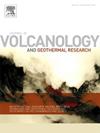Multiple dikes make eruptions easy
IF 2.4
3区 地球科学
Q2 GEOSCIENCES, MULTIDISCIPLINARY
Journal of Volcanology and Geothermal Research
Pub Date : 2025-02-03
DOI:10.1016/j.jvolgeores.2025.108284
引用次数: 0
Abstract
Dikes supply magma to most volcanic eruptions. Understanding how propagating dikes may, or may not, reach the surface is thus one of the fundamental tasks for volcanology. Many, perhaps most, dike segments injected from magma sources do not reach the surface to feed volcanic eruptions. Instead, the dike segments become arrested (stop their propagation), commonly at or close to contacts between mechanically dissimilar layers/units, at various crustal depths. This means that many and perhaps most volcanic unrest periods with dike injections do not result in eruptions. There are several conditions that make dike arrest likely, but the main one is layering where the layers have contrasting mechanical properties. Such layering means that local stresses are heterogeneous and anisotropic and, therefore, in some layers unfavourable for dike propagation – hence the dike arrest. Here I show that once a dike has formed, however, its very existence tends to make the local stress field along the dike homogeneous (with invariable orientation of principal stresses) and favourable (with dike-parallel orientation of the maximum compressive principal stress) for later dike injections. This means that subsequence dikes may use an earlier dike as a path, either along the margin or the centre of the earlier dike, thereby generating a multiple dike. Because earlier feeder-dikes form potential paths for later-injected dikes to the surface, many volcanic eruptions are fed by multiple dikes. Examples include recent eruptions in the volcanoes Etna (Italy) and Kilauea (Hawaii), and the Icelandic volcanoes Krafla, Hekla, Fagradalsfjall, and the Sundhnukur crater row. Thus, multiple dikes favour dike propagation to the surface; thereby making dike-fed eruptions easier.
多道堤坝使火山爆发变得容易
岩脉为大多数火山喷发提供岩浆。因此,了解延伸的岩脉如何到达地表是火山学的基本任务之一。许多,也许是大多数,从岩浆源注入的岩脉片段并没有到达地表,为火山喷发提供补给。相反,在不同的地壳深度,通常在机械不同的层/单元之间的接触处或接近接触处,堤段被阻止(停止其传播)。这意味着许多,也许是大多数火山不稳定时期的岩脉注入不会导致喷发。有几个条件可能使脉阻,但最主要的是分层,其中各层具有不同的机械性能。这种分层意味着局部应力是不均匀的和各向异性的,因此,在某些层中,不利于岩脉的扩展-因此产生了岩脉阻滞。然而,一旦岩脉形成,它的存在往往会使沿岩脉的局部应力场均匀(主应力方向不变),并且有利于(最大压缩主应力方向与岩脉平行)以后的岩脉注入。这意味着后续的岩脉可能会沿着早期岩脉的边缘或中心,以早期岩脉为路径,从而形成多重岩脉。因为早期的补给岩脉为后来注入的岩脉形成了潜在的路径,许多火山爆发都是由多个岩脉补给的。例如,最近发生在埃特纳火山(意大利)和基拉韦厄火山(夏威夷)的喷发,以及冰岛的克拉夫拉火山、赫克拉火山、Fagradalsfjall火山和Sundhnukur火山口的喷发。因此,多岩脉有利于岩脉向地表扩展;从而使堤源喷发更容易。
本文章由计算机程序翻译,如有差异,请以英文原文为准。
求助全文
约1分钟内获得全文
求助全文
来源期刊
CiteScore
5.90
自引率
13.80%
发文量
183
审稿时长
19.7 weeks
期刊介绍:
An international research journal with focus on volcanic and geothermal processes and their impact on the environment and society.
Submission of papers covering the following aspects of volcanology and geothermal research are encouraged:
(1) Geological aspects of volcanic systems: volcano stratigraphy, structure and tectonic influence; eruptive history; evolution of volcanic landforms; eruption style and progress; dispersal patterns of lava and ash; analysis of real-time eruption observations.
(2) Geochemical and petrological aspects of volcanic rocks: magma genesis and evolution; crystallization; volatile compositions, solubility, and degassing; volcanic petrography and textural analysis.
(3) Hydrology, geochemistry and measurement of volcanic and hydrothermal fluids: volcanic gas emissions; fumaroles and springs; crater lakes; hydrothermal mineralization.
(4) Geophysical aspects of volcanic systems: physical properties of volcanic rocks and magmas; heat flow studies; volcano seismology, geodesy and remote sensing.
(5) Computational modeling and experimental simulation of magmatic and hydrothermal processes: eruption dynamics; magma transport and storage; plume dynamics and ash dispersal; lava flow dynamics; hydrothermal fluid flow; thermodynamics of aqueous fluids and melts.
(6) Volcano hazard and risk research: hazard zonation methodology, development of forecasting tools; assessment techniques for vulnerability and impact.

 求助内容:
求助内容: 应助结果提醒方式:
应助结果提醒方式:


